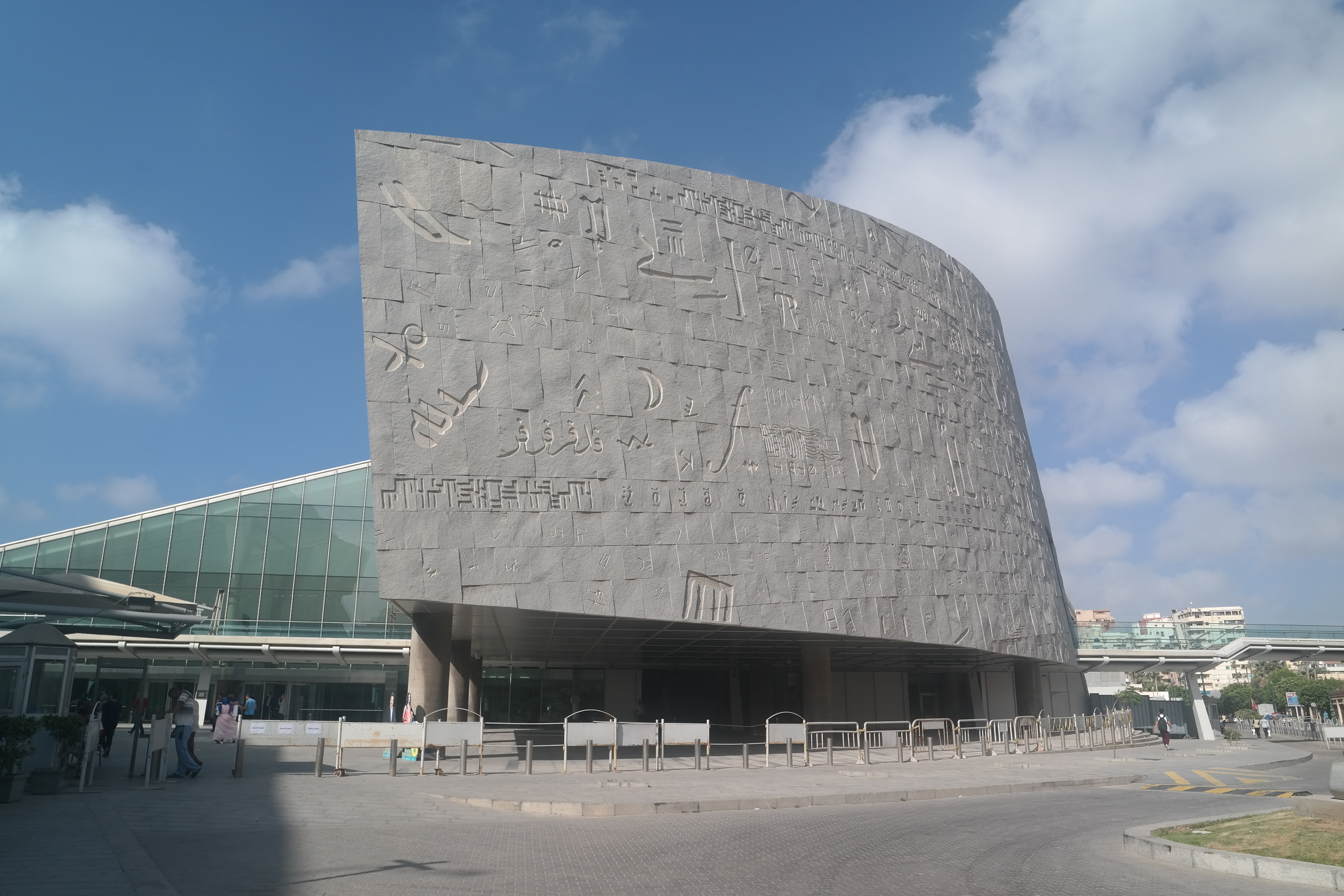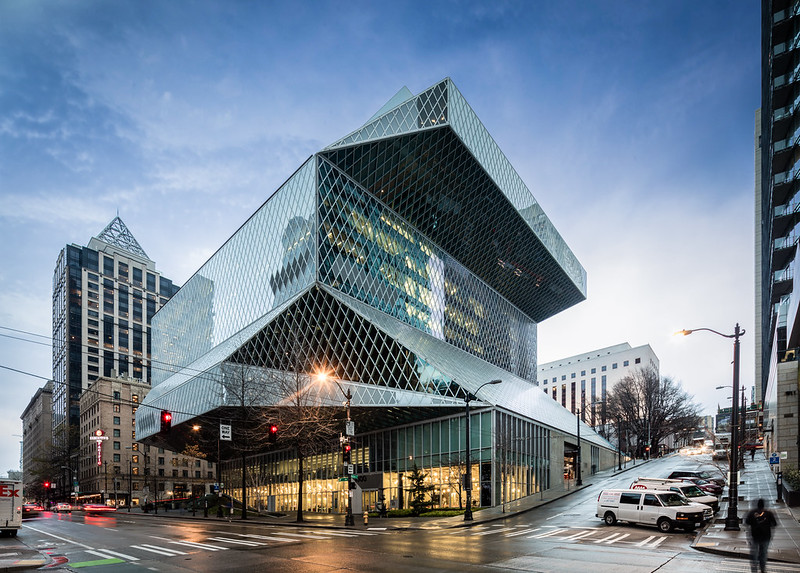
Green Square Library (Australia)
After getting an email as a part of a regular newsletter for the branch library I frequent, I learned that my preferred branch of SFPL was one of three that was underway for being renovated in the near future. The plans had been in talks for years now — with other SFPL branches having been renovated over past decades. Naturally, this led me to wonder what a new, renovated version of my usual library branch would be like. How much would it change? This, in turn, led me to think about the considerations that libraries must deliberate when updating and renovating their facilities for the modern day. Fortunately, a section of Module 8: New Models talks about just that.
The first and primary consideration libraries should always keep in mind throughout the implementation process is that they are institutions (in the physical and abstract sense) that are not only for their communities, but should also reflect the community that they serve (HBM Architects, 2023). A library can say it’s for the community, but may not always be so in practice based on the materials, services, and general atmosphere that it embodies. This is a ‘basic’ premise and foundational truth of the user-centric exchange in libraries, but it is one that some may forget also needs to be taken into consideration when designing and constructing the physical architecture of a library as well.

Bibliotheca Alexandrina (Egypt)
Library buildings are a type of ‘social infrastructure’, as defined by Eric Klinenberg to mean “the physical places and organizations that shape the way people interact” (Gaetani, 2018). He describes these places of social infrastructure as locations that can help bring a community together and promote a greater sense of civic cohesion (Gaetani, 2018). He even goes on to say that “This environment ‘shapes our behavior in ways we’ve failed to recognize; it helps make us who we are and determines how we live'” (Gaetani, 2018). Whether or not you agree with Klinenberg’s points, the truth is that libraries are meant to be a place of community; they would not be what they are without the people who utilize their services — now more than ever.
However, libraries cannot be meaningful examples of social infrastructure unless they know their community. Libraries may be able to shape the way people interact, as Klinenberg says of social infrastructure, but it may not be effective if its not treading the path of what users actually want. There are a great many ways to get to know the community you’re serving in a library — some methods being more direct than others, such as surveying users and gaining direct feedback and ideas that way. While I would definitely be a proponent of such interactivity, there are also more indirect ways of getting a sense of your community at large as well in order to help guide designers and library stakeholders in the process of creating and renovating library spaces.
For example, libraries can utilize demographic data to get a sense of the past, present, and future trends and needs of the community (HBM Architects, 2023). Levels of population growth can help you determine whether you may need more programs and resources geared towards older or younger patrons, and race and ethnicity data can provide insight into whether adjustments such as a larger foreign language collection may be necessary — to name but a few (HBM Architects, 2023). Additionally, you can even make informed decisions based on the physical location of your library building within the community. As quoted in the Library Journal,
“A library along a major public transit route could provide a broader range of services and activities for those who use transit but may not live in the immediate community. A branch located near major commuter routes should consider drive-up and remote access services as the user group is likely to be reliant on motor vehicles” (HBM Architects, 2023).
Similarly, the distinction between main and branch libraries continues in the context of the range of services they provide — which is often influenced by their location. Main libraries, because they are the central hub of the system that is often located in the population center, tend to provide a more generalized wide breadth of services to both their immediate community and to the larger library system community that they serve as well (HBM Architects, 2023). On the other hand, branch libraries can be more personalized in their approach — tailored to the specific microcosms that they serve around them (HBM Architects, 2023). This is why the SFPL Chinatown Branch, for example, has a greater special focus on its ‘Asian Interest’ collection of books, pamphlets, newspapers, magazine articles and more — with a particular emphasis on China, Chinese culture & history, and Chinese-Americans (San Francisco Public Library [SFPL], n.d.a) in comparison to the Main Library branch. The branch library recognizes that because of the community it serves, the availability of these resources would be more beneficial in this location.

Toronto Reference Library (Canada)
Naturally, these are the types of considerations I imagine that the aforementioned SFPL branch renovation projects will take when redesigning their spaces. Upon looking at their site, the described goals for the Chinatown branch, for example, states that they aim to make this library “an energy efficient, safe and resilient neighborhood library while maintaining the building’s inherent charm” (SFPL, n.d.b). They then place an emphasis on blending 21st century library practices with the ‘old’ — which in this case refers to the building itself, which the architects and designers hope to preserve for its historical legacy as it is a few years over a 100 now.
This mindset definitely stood out to me as something that I believe libraries should maintain looking into the future. It also reminded me of succesful library renovations like the infamous Dokk1 library in Denmark which blended traditional and forward-thinking library visions into a massively succesful cultural hub. The mention of energy-efficiency in SFPL’s description also led me to think of the planned redesign for the Westchester Square Library in the Bronx, whose design incorporates eco-friendly elements like a ‘frit pattern’ which “is calibrated to frame vistas of the surrounding blocks and to filter incoming light from the sun as part of a holistic effort to reduce the Library’s energy use” (Price, 2023). At night, the library will then “shine as a glowing beacon for the neighborhood and the city” (Price, 2023). Along with literally, I think this is also a nice metaphor for the library’s place in the community in general too.
Aspirational goals and statements like SFPL’s, which is what inspired my interest in this topic to begin with, are important ones. It is important for libraries to constantly strive for growth not only in their methodology in providing services and the services themselves, but even in the building architecture. While striving to meet the needs of their community now and in the near future, they should also remain flexible enough for future expansion opportunities (HBM Architects, 2023). This is important now more than ever because the information, technological, and social landscape can change rapidly.

Seattle Public Library (USA)
To conclude, in a previous class, every week we were shown interesting libraries from around the world. Interspersed through this blog post are just a few of the examples I was exposed to. During this showcase, I noticed just how appealing the libraries with interesting design quirks or eye-catching overall architecture were to me. It made me think about how much more likely I would be to want to go and check it out if I was walking by. (And it certainly also added a few worldwide libraries on my bucket list!) Just like a book, while what is inside is what ultimately counts and leaves the lasting impression, you can’t overlook the cover! Though we shouldn’t entirely judge books or even buildings by their exteriors, the truth of the matter is that we all do. We’re only human, after all.
References:
Gaetani, M. (2018, November 11). Q&A with Eric Klinenberg. Stanford University. https://casbs.stanford.edu/news/qa-eric-klinenberg
HBM Architects. (2023, February 9). Centering your library around the community. Library Journal. https://www.libraryjournal.com/story/centering-your-library-around-the-community-lj230207
Price, G. (2023, January 4). Report: “This super cool, futuristic library is opening in the Bronx by 2025”. Library Journal. https://www.infodocket.com/2023/01/04/report-this-super-cool-futuristic-library-is-opening-in-the-bronx-by-2025/
San Francisco Public Library. (n.d.a). Chinatown/Him Mark Lai. https://sfpl.org/locations/chinatown
San Francisco Public Library. (n.d.b). Chinatown / Him Mark Lai Renovation. https://sfpl.org/about-us/capital-projects-building-you/library-improvements-tomorrow/chinatown-him-mark-lai

What a beautiful selection of library architecture you highlighted in this reflection. I’m especially drawn to that beautiful garden in Australia’s Green Square Library– would love to relax there!
I enjoyed your focus both on libraries reflecting their communities as well as the differences in programming between central hubs and branches– I’ve found that the central hub of my library is certainly the most general programming aside from its larger events, and then the branches are more tailored to their neighborhoods: one branch up in the mountains has a much higher number of homeschooling families so has lots of STEM and craft workshops, while another on a different side of town has an older population, so offers more movement-based classes such as Tai Chi and yoga.
My local library in Santa Cruz is similarly about to update its main branch– we’re building the downtown location a few blocks away from the ground up. There’s a lot of grief in the community because the only lot large enough to accommodate the project will cause the relocation of our main farmer’s market from where it has existed for many decades, but I’m still looking forward to what we create.
@ramasha So many amazing examples. I have toured at least a couple of these libraries and really enjoyed seeing all the spaces and investigating the services. You made a nice connection to social infrastructure too.